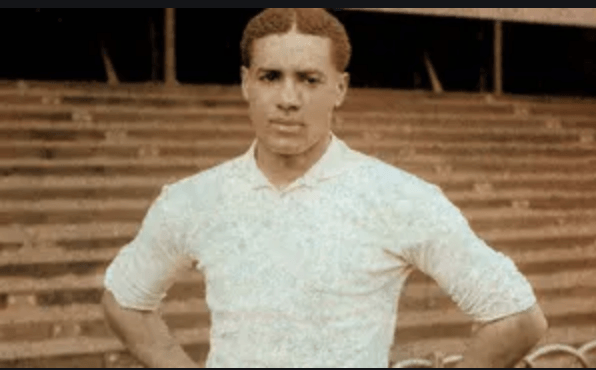The Walter Tull Story.
Walter learned the art of printing and played football for Clapton, one of the top London amateur sides. He helped them to win the F.A. Amateur Cup and soon attracted scouts from the bigger clubs.
Tottenham signed him and took him on their tour of South America. Walter was skilful and clever but he lacked pace, certainly for the football league. He did play in Tottenham’s first-ever football League game v Sunderland but was dropped for the next game.
The League show a transfer to Heanor Town of the Midland League in 1910 but there is no record of him playing for them, instead, he joined Northampton as a ‘make weight’ of the transfer of Charlie Brittain to Tottenham. Walter scored nine times in 12 appearances for the Cobblers including four in one match v Bristol Rovers. His pace was slow even for Southern League football; he was in and out of the side.
Walter Bull took over as manager replacing his old Spurs teammate Herbert Chapman. Although his stay was short he pulled a masterstroke by converting Walter Tull to wing half. He made over 100 appearances from this position over the next three seasons. There was the talk of him joining Glasgow Rangers for the start of the 1915-16 season as his brother had a dental practise in the city however fate was taken out of his hands.
World War one was declared and Walter became the first Northampton Town player to join the first battalion of the Middlesex regiment commanded by Major Frank Buckley later to be the manager of Wolves. In November 1915 Walter saw France for the first time, as his battalion were billeted 16 miles from the front line. He did return and found time to make a couple of wartime appearances for Fulham.
In fact, in just over two seasons he made only ten first-team appearances and scored two goals. In one particular game v Bristol City at Ashton Gate, he was subjected to a barrage of abuse by City fans that was likened to ‘language used at Billingsgate market.’
He rose to Sergeant and was one of many casualties invalided out of France, however on his recovery he went to the officer’s cadet training school in Scotland and returned to battle as the second lieutenant of the Middlesex regiment.
At the battle of the Somme, he was killed on the battlefield by a bullet through the head. Fellow soldiers tried to carry his body back to the Base but conditions were so bad they had to leave him there.
